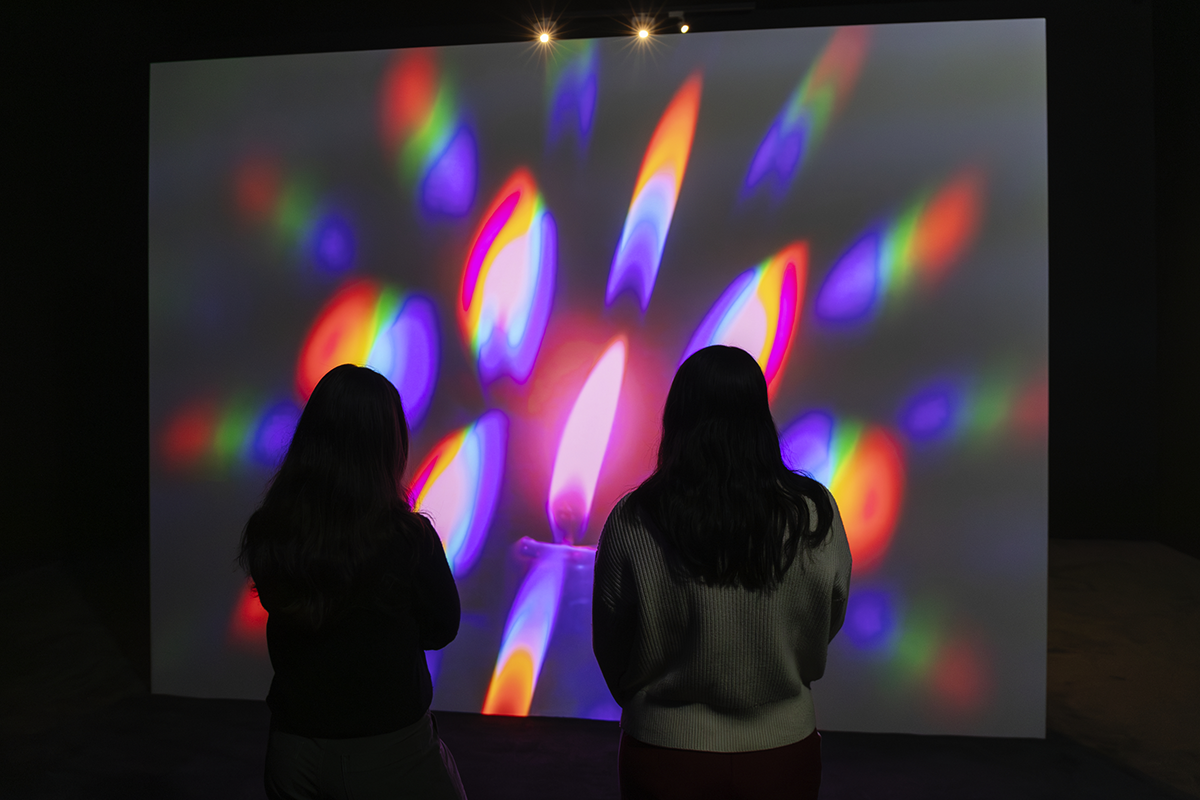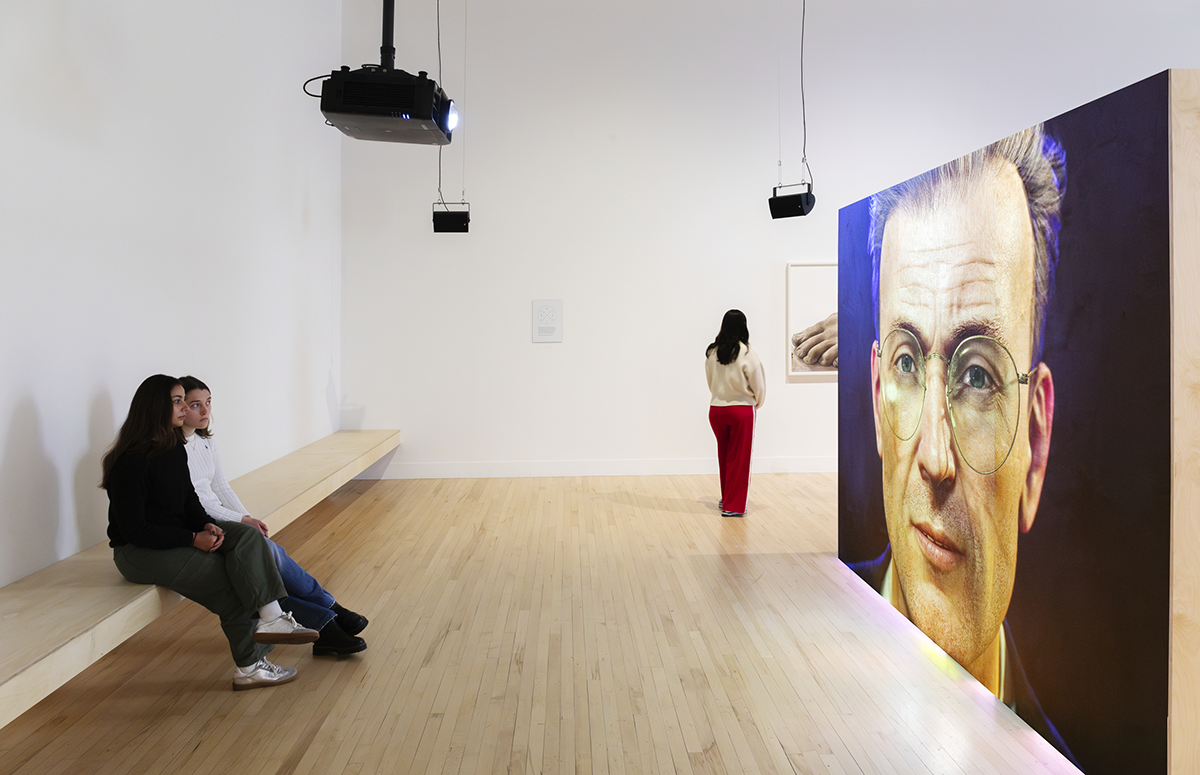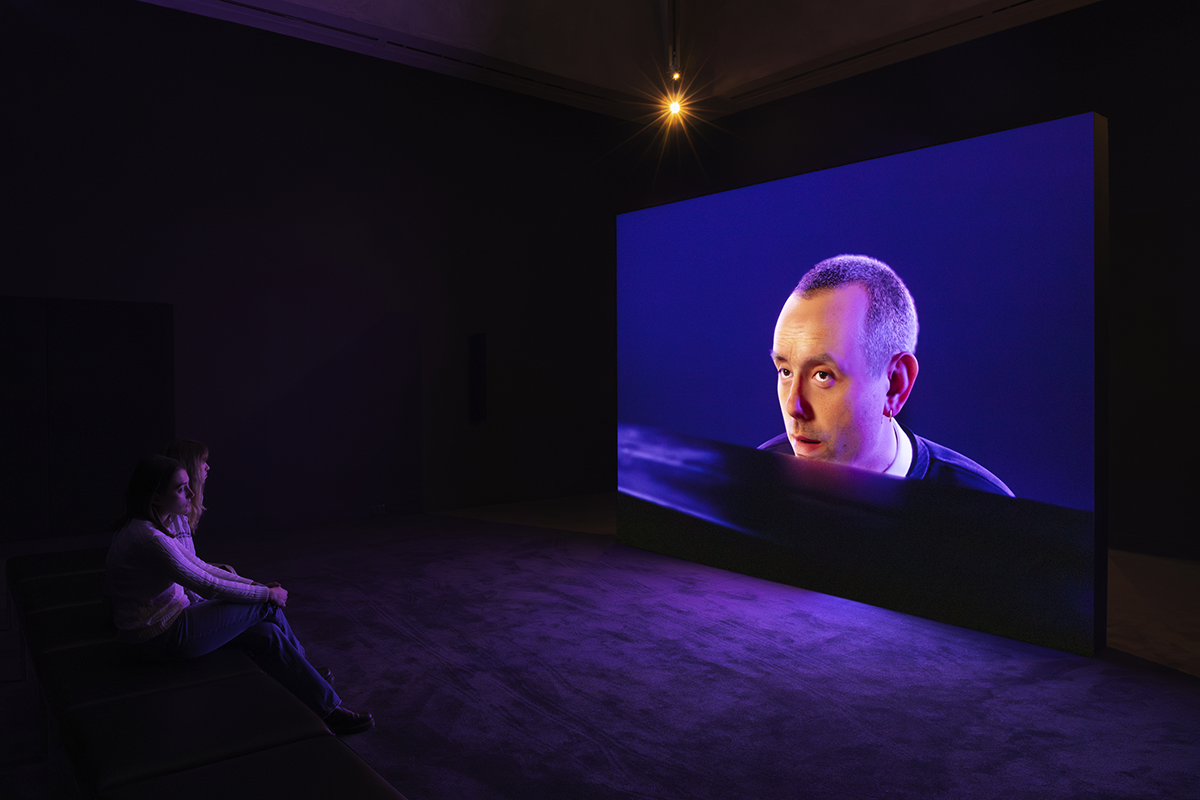ED ATKINS EXHIBITION
HAPPENINGText: Victor Moreno
Ed Atkins has spent fifteen years asking one big question: where does our digital life end and real human feeling begin? The Oxford-born, Copenhagen-based artist uses his own face and voice as material, creating videos that mess with the gap between what we see on screen and what we actually feel.
Now Tate Britain is showing the largest UK survey of his work to date — fifteen years of computer-generated videos, animations, drawings, and writings. At 42, Atkins has become one of the most influential British artists working today, the go-to guy for understanding how technology affects our emotions. But this isn’t just about showing off digital skills — it’s about using tech as a mirror to reflect our fears about what’s real and what’s fake.

Ed Atkins, Death Mask II, 2010, installation view, Tate Britain. Photo: Josh Croll © Tate Photography
Early Chaos: Death Mask II and Cur. The show kicks off with two brutal 2010 videos that Atkins calls “montages of intoxication, rejection and abandonment.” Death Mask II and Cur announce his distinctive style right away — conspicuous lens flares, autofocus problems, random audio blurts. He wants you to remember you’re looking at something totally artificial, built to seduce and repulse at the same time.

Ed Atkins, The worm, 2021, installation view, Tate Britain. Photo: Josh Croll © Tate Photography
From there, he shifted almost entirely to computer-generated animation. Refuse.exe (2019) uses a video game engine to dump trash onto a stage, while The worm (2021) features an animated TV staging of a phone call between Atkins and his mother. These aren’t just videos — they’re performances where Atkins uses motion capture tech to animate digital versions of himself.

Ed Atkins, Pianowork 2, 2024, installation view, Tate Britain. Photo: Josh Croll © Tate Photography
Pianowork 2 and Digital Doubles. The show’s standout piece is Pianowork 2 (2024) — what looks like a sweating, struggling pianist fumbling through every note. Plot twist: it’s actually an extremely accurate digital double of Atkins performing a minimalist piano piece. The rendering is so perfect you can count every stubble hair, but those slightly-too-smooth CGI eyes give it away.
Read more ...




